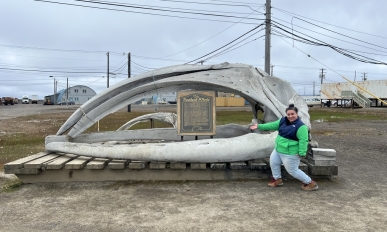Identifying Central and Peripheral Thermosensors in Eurythermal and Stenothermal Arctic Fishes
The Arctic Ocean is warming at a rate up to seven-fold the global average, endangering and shifting key subsistence and commercial fisheries. Fish populations are stressed by warming and simultaneously by ocean acidification and oxidation. This study aims to characterize the evolution of sensory proteins that integrate signals of warming, changing pH, and oxidation in the sensory systems of three species of Arctic and sub-Arctic fish: the Arctic cod (Boreogadus saida), saffron cod (Eleginus gracilis), and Atlantic cod (Gadus morhua). Studying the evolution of these sensory mechanisms will provide insight into the sensitivity and responses of fish to climate change but also help us understand these same proteins in humans which are major drug targets that underlie pain, inflammation, itch, and the sensation of heat and cold. During the course of this research, two undergraduates from underrepresented groups in science will be mentored through a summer research program and a K-12 lesson plan will be developed that combines the science from this project with Alaska Native science curricula and values and Next Generation Science Standards.






